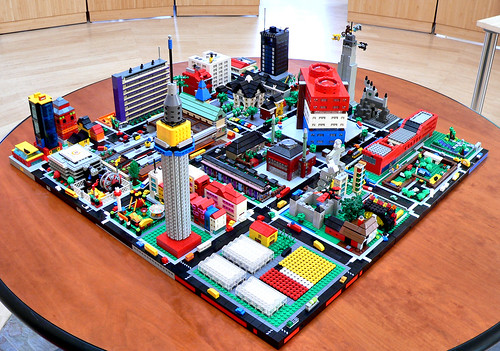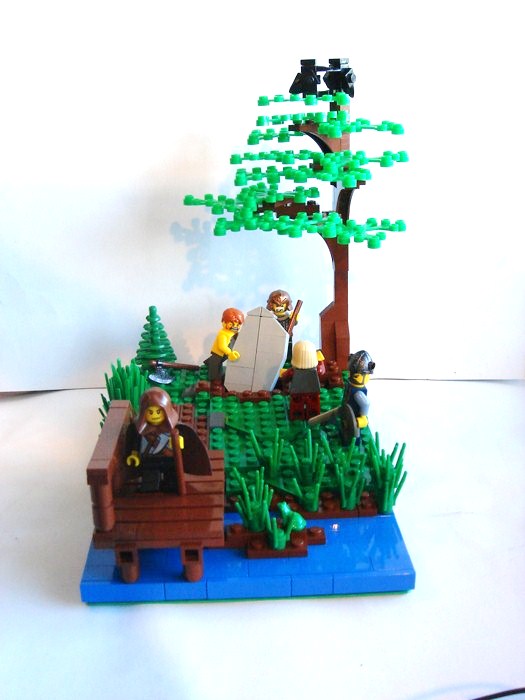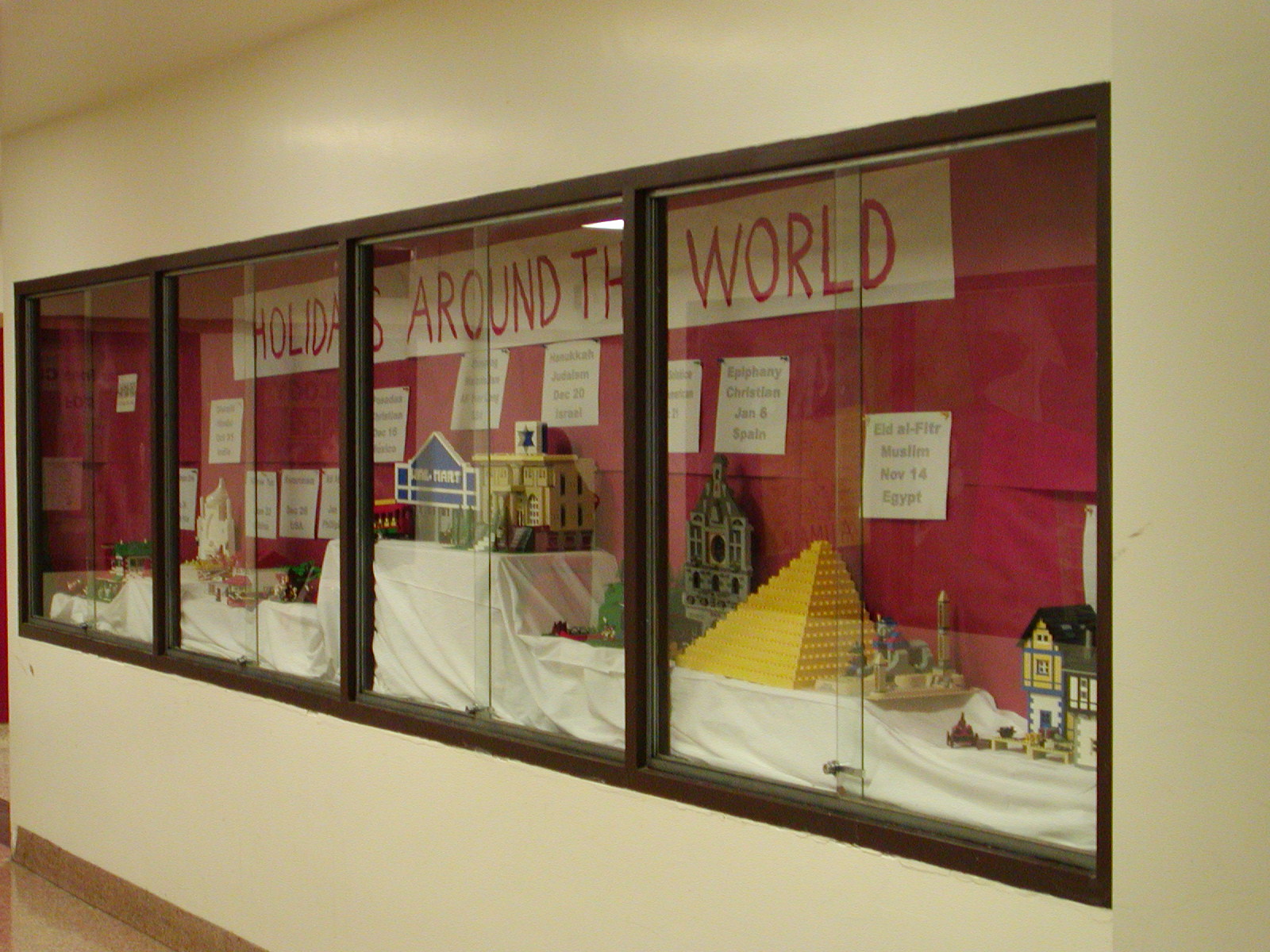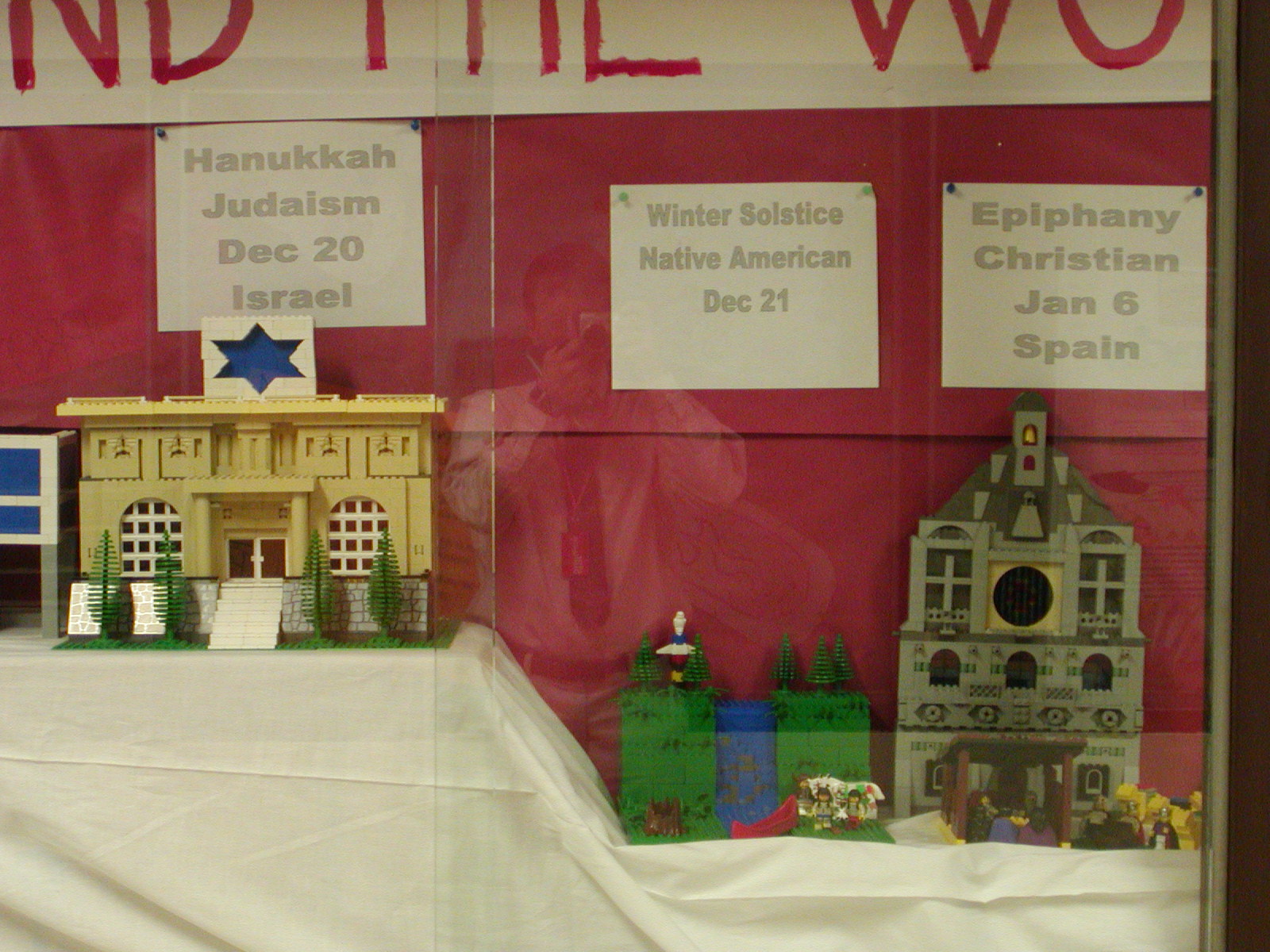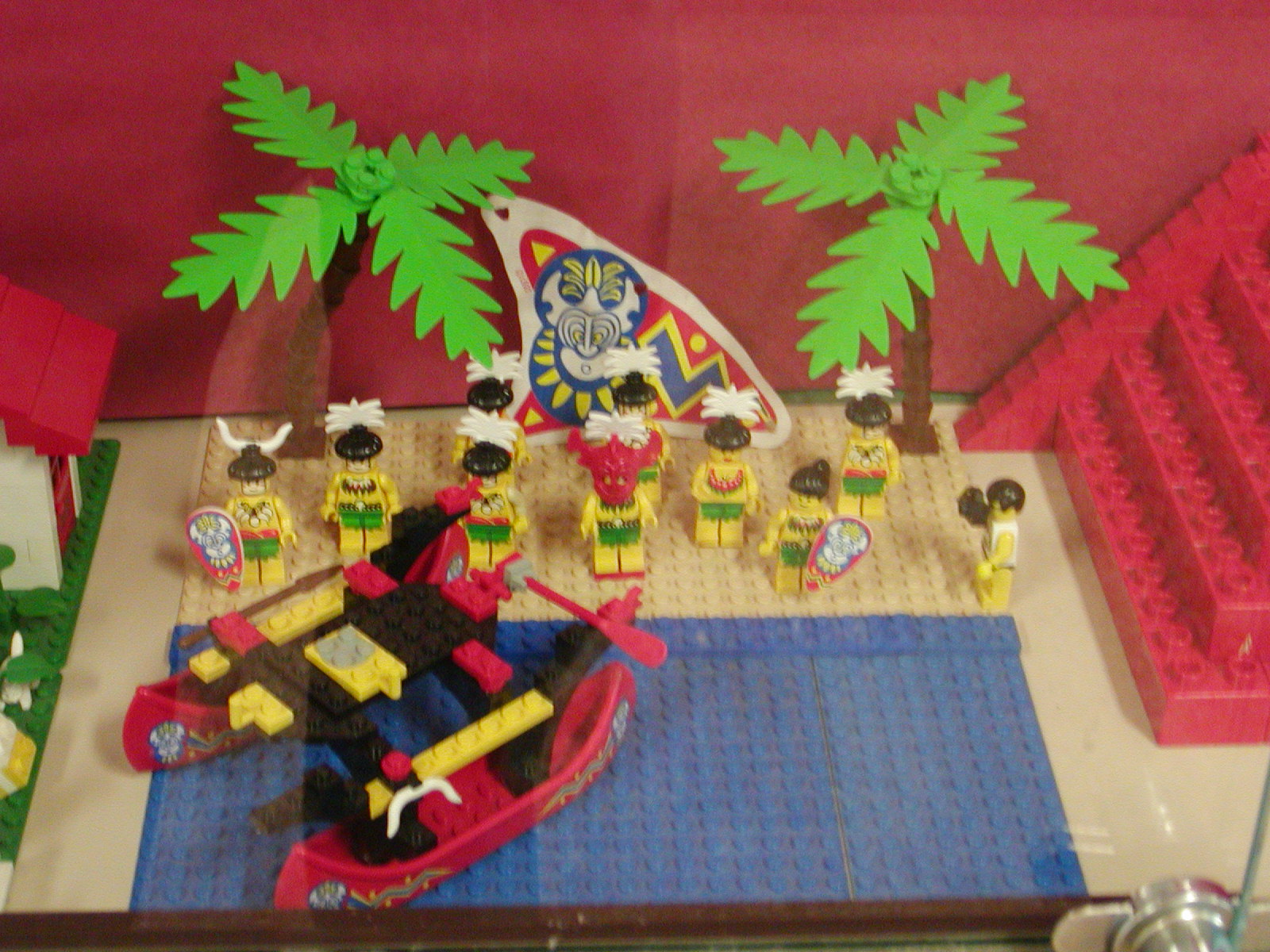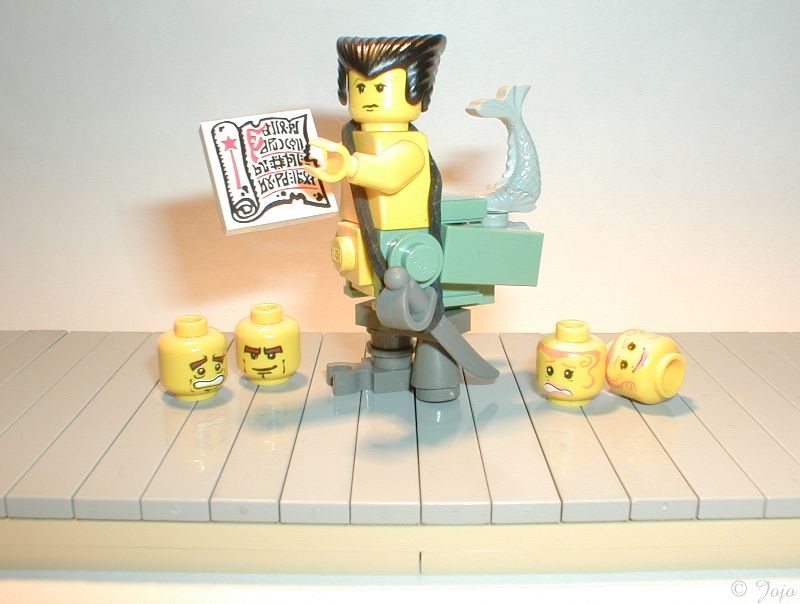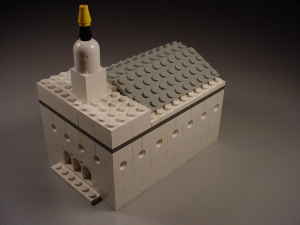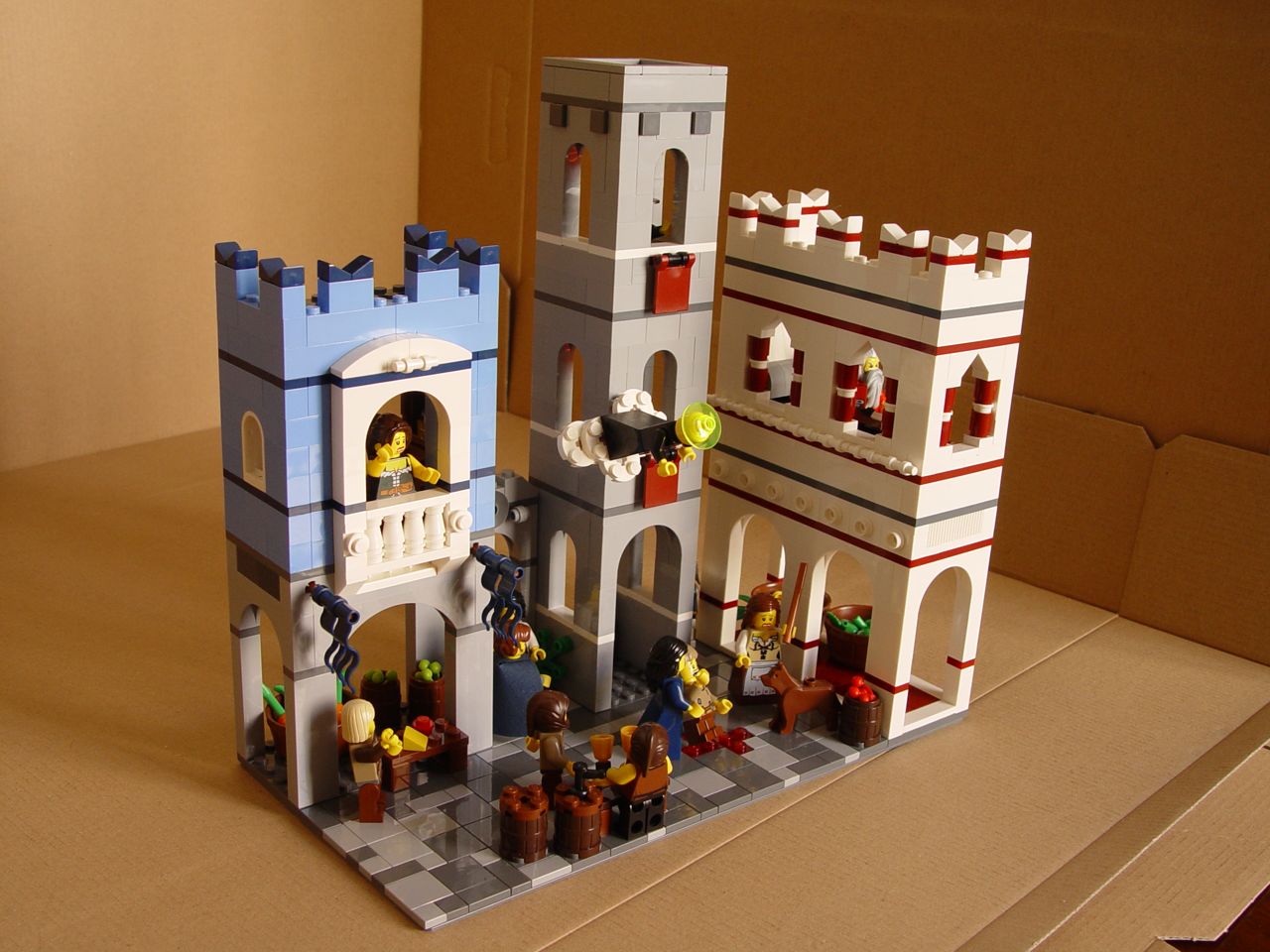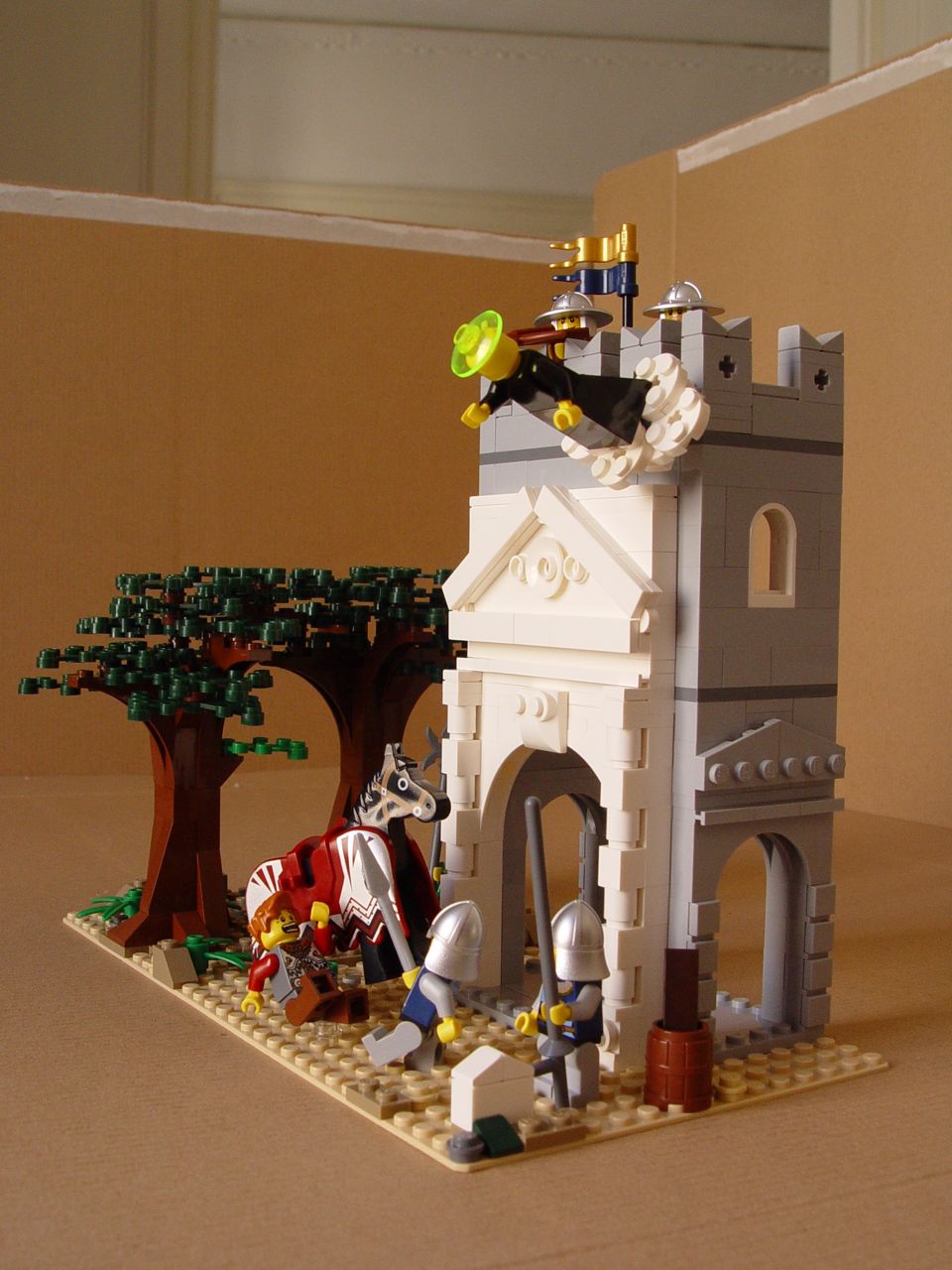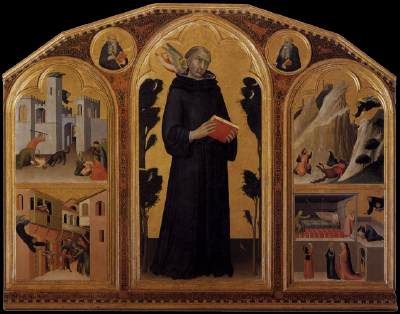Barbara Werth, aka McBricker, has created this lovely Orthodox
chapel from the isle of Crete. Since many of my US readers might be less familiar with the Orthodox Church, a quick digression. Five centuries before the Protestant Reformation, an earlier schism divided the Christian Church into eastern (Orthodox) and western (Roman Catholic) halves. The occasion of this division was a theological dispute over a phrase added to the Nicene Creed - "and the Son" (or "filioque" in Latin). The eastern church held that the third person of the Trinity, the Holy Spirit, proceeded from the Father, while the western church held that the Spirit came from the Father and the Son. While this may seem like a very fine point to us today, and probably something most modern Christians never consider, it was also tied up with questions of the authority of the Bishop of Rome (the Pope), disputes over political control and cultural differences. To a complete outsider, the Orthodox may be seen as "priests with funny hats" in that their clergy wear traditional dress. Their religious practices are similar to pre-Vatican II Catholicism. The churches tend to be divided up along national lines, so there is a Greek Orthodox church, a Russian Orthodox church and so on. (Please forgive my vastly oversimplified statements here as an outsider.)

Barbara's chapel gets a lot of details of this chapel down. Since she places this "between Rethymno and Irakleo" it's somewhere on the northern coast of Crete - so the cliff is facing north, and therefore the chapel is facing east, as is traditional. Also note the iconostasis, or icon-covered screen at the front (apparently this church is dedicated to Saint Potter :) ), the candles and the bell. As a LEGO builder I also really appreciate the curved roof, the tiny goats up above to give forced perspective and the mountain in the distance built in as a mosaic.
On a blog-centric aside, note that I've split the "architecture" tag into two - real and fictional. Real is for those LEGO creations that recreate specific buildings from the real world, such as the Cathedral of Notre Dame. Fictional is for those buildings out of the builder's imagination, even if it might be based, for instance, on a typical gothic cathedral style. I was actually unsure in this case, as does give a fairly specific locale for this chapel, but she doesn't single it out as one specific church.

